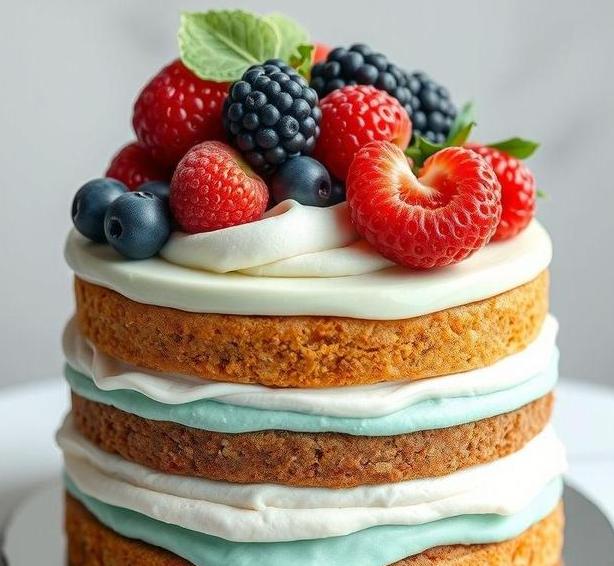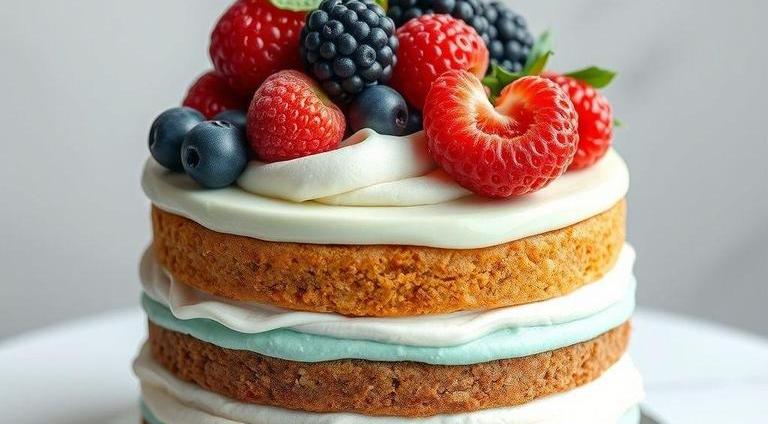Baking a cake is one of life’s small joys. Whether it’s for a celebration or just a weekend treat, the process of layering cake, spreading frosting, and decorating can feel like a creative adventure. But what happens when you’re not ready to eat the whole cake in one go? Or, let’s say you’ve got leftover cake layers that didn’t get used for the cake design you had in mind. Can these layers be stored, or do they eventually go bad? That’s a great question and one that many home bakers wonder about.
Cake layers, like most baked goods, do have a limited shelf life. However, with the right storage techniques, they can last longer than you might expect. The real key is understanding what affects their freshness and how to protect them so they stay delicious for as long as possible. So, let’s dive into everything you need to know about cake layer shelf life, spoilage, and how to store them properly.
Can Cake Layers Go Bad?
Yes, cake layers can absolutely go bad. While cake is inherently a shelf-stable product (thanks to its dry ingredients), it’s still highly susceptible to spoilage when exposed to the wrong conditions. Think about it: cake is made with perishable ingredients, like eggs, milk, and butter. These ingredients, combined with the moisture in the cake, provide an ideal environment for bacteria, mold, and even yeast to thrive if left out too long.
So, how quickly they go bad depends on factors like:
- Storage conditions
- Ingredients used
- Exposure to air
- Temperature
If stored improperly or left exposed to heat and humidity, cake layers can go stale, develop off-flavors, or even mold. Knowing the best practices to preserve them can help extend their life, but ultimately, they will go bad at some point.
Shelf Life For Cake Layers

The shelf life of cake layers depends on a few critical factors. Here’s a breakdown of how long you can expect cake layers to last based on storage conditions:
-
Room Temperature (Unfrosted)
If you’re not frosting your cake and you’re storing it at room temperature in an airtight container, it can last 3-5 days. The cooler and less humid the environment, the better. Any longer than this and the cake will start to dry out or pick up odors from the air.
-
Room Temperature (Frosted)
Once the cake is frosted, it has a slightly shorter shelf life, especially if the frosting is made with dairy (like buttercream or cream cheese). A frosted cake will last 2-3 days at room temperature. Keep in mind that the type of frosting will impact this-non-dairy frostings might last a little longer, while cream cheese or whipped cream-based frostings require refrigeration after 2 hours.
-
Refrigerator (Unfrosted)
If you plan on storing cake layers for a longer period, the fridge is a better option. An unfrosted cake can last 1 week in the refrigerator if properly wrapped or in an airtight container.
-
Refrigerator (Frosted)
Frosted cakes generally last 1 week in the fridge. However, be mindful of the frosting type-cream cheese frosting, for instance, may have a shorter shelf life due to its dairy content.
-
Freezer (Unfrosted)
The freezer is your best friend if you want to preserve cake layers for an extended period. Wrapped tightly in plastic wrap and placed in an airtight container or freezer bag, cake layers can last up to 6 months in the freezer. This is perfect if you want to prep cake layers ahead of time or store leftovers for future use.
-
Freezer (Frosted)
Frosted cake layers are still freezable, but they generally last a bit shorter in the freezer than unfrosted cake layers-3-4 months. The key to freezing frosted cakes successfully is to freeze the layers separately first (without any condensation or squishing) and then assemble the cake later.
Common Signs Of Spoilage
Knowing when your cake has gone bad is crucial. There are several clear indicators that can help you identify spoiled cake layers:
- Dryness and Crumbling: If your cake layers have gone dry and crumbly, they’ve lost their moisture, which is a sign that they’re past their prime.
- Mold Growth: This one’s pretty obvious. If you notice green, blue, or white fuzz on the cake, it’s a clear sign of mold growth, which is caused by improper storage or the cake being kept for too long.
- Off Smells: If the cake starts smelling sour or rancid, especially around the frosting or exposed areas, it’s likely spoiled. Dairy-based frostings are particularly prone to this.
- Discoloration: Cakes that start to turn a strange or off-color (especially if the frosting is involved) might indicate bacterial growth, which means the cake is no longer safe to eat.
- Wetness or Sliminess: This could mean the cake is absorbing moisture from the environment, which can lead to bacterial growth or sogginess. A wet cake layer is a sign it’s been exposed to the wrong conditions for too long.
How To Store Cake Layers?

Storing cake layers properly is essential for maintaining their flavor, texture, and freshness. Here are some expert-approved tips for storing cake layers:
- Cool Completely: Always allow your cake layers to cool completely before storing. If you try to store warm cake, condensation will form, creating moisture that speeds up spoilage and potentially leads to sogginess.
- Wrap in Plastic: Wrap each cake layer individually in plastic wrap. This helps lock in moisture and protects the cake from being exposed to air, which can dry it out.
- Use Airtight Containers: After wrapping, place the cake layers in an airtight container or a resealable plastic bag. This extra layer of protection prevents them from absorbing any odors from the fridge or pantry.
- Avoid Direct Sunlight and Heat: If storing at room temperature, make sure the cake layers are kept in a cool, dry place away from direct sunlight and heat sources. A pantry or cupboard works best.
- Consider Freezing for Long-Term Storage: For longer storage, especially if you want to preserve the cake for a few months, freezing is the way to go. Wrap the layers tightly in plastic wrap, followed by a layer of aluminum foil, and then place them in a heavy-duty freezer bag. Be sure to label them with the date so you can track how long they’ve been stored.
Expert Tips
Here are a few additional tips from expert bakers to keep your cake layers fresh for longer:
- Use Syrup to Moisten: If you’ve got a layer that’s starting to dry out, you can brush it with a simple syrup (sugar and water) to add moisture back in. This will revive the texture without compromising flavor.
- Don’t Stack Layers: When storing multiple layers, avoid stacking them unless they’re frosted. If stacked, the pressure can cause the layers to flatten or distort, especially if they haven’t set properly.
- Label Your Storage: This might seem simple, but it helps. Always label your cake storage containers with the date so you can keep track of how long it’s been stored. It’ll save you from guessing whether the cake is still good to eat.
- Frost After Freezing: If you’re freezing an unfrosted cake and plan to frost it later, do so after thawing the layers. Frosting a frozen cake can cause the frosting to harden or not adhere properly.
FAQs
How Long Can Cake Layers Last At Room Temperature?
Cake layers can last up to 2-3 days at room temperature if properly stored. It is important to keep them in an airtight container or wrapped in plastic wrap to prevent them from drying out or absorbing odors from the environment.
Can Cake Layers Spoil If Left Out Too Long?
Yes, cake layers can spoil if left out for more than a few days. This is especially true for cakes that contain perishable ingredients like cream cheese or fresh fruit, which can promote the growth of bacteria.
What Are The Signs That Cake Layers Have Gone Bad?
Signs that cake layers have gone bad include an off smell, mold growth, discoloration, or a stale, dry texture. If the cake has a sour taste or has become overly firm or crumbly, it’s likely no longer safe to eat.
Can You Store Cake Layers In The Refrigerator?
Yes, cake layers can be stored in the refrigerator to extend their freshness, especially if they contain perishable fillings or frostings. Typically, they can last 5-7 days in the fridge when properly wrapped or placed in an airtight container.
Can You Freeze Cake Layers To Prevent Them From Going Bad?
Freezing cake layers is an excellent way to preserve them for longer periods. When frozen properly in plastic wrap or airtight packaging, cake layers can last up to 3 months without losing much of their flavor or texture.
How Do You Know If A Frozen Cake Layer Has Gone Bad?
Frozen cake layers can go bad if they’ve been improperly stored, resulting in freezer burn or a change in texture. Signs include ice crystals on the surface, freezer burn marks, or an off smell once thawed.
Can I Still Eat Cake Layers With Frosting After They’ve Been Stored For A While?
Cake layers with frosting can remain safe to eat if stored correctly, but the frosting may spoil faster than the cake itself, especially if it contains dairy products. If the frosting has changed color, texture, or developed an off smell, it should be discarded.
What Is The Best Way To Store Cake Layers To Keep Them Fresh?
To keep cake layers fresh, store them in an airtight container or wrap them tightly with plastic wrap. For longer storage, consider placing the wrapped layers in a resealable freezer bag if you’re storing them in the freezer.
Can Cake Layers Go Bad If They Are Undercooked?
Undercooked cake layers can go bad more quickly, as they may contain raw batter that can spoil due to the presence of eggs and dairy. If the cake layers have a wet or gooey texture, they should be discarded to avoid foodborne illness.
Can Flavored Cake Layers, Like Chocolate Or Fruit, Go Bad Faster Than Plain Cake?
Flavored cake layers, particularly those with added moisture or ingredients like fruit, chocolate, or syrup, may go bad faster than plain cake. These ingredients can contribute to spoilage, so it’s important to store them properly and consume them within a few days.